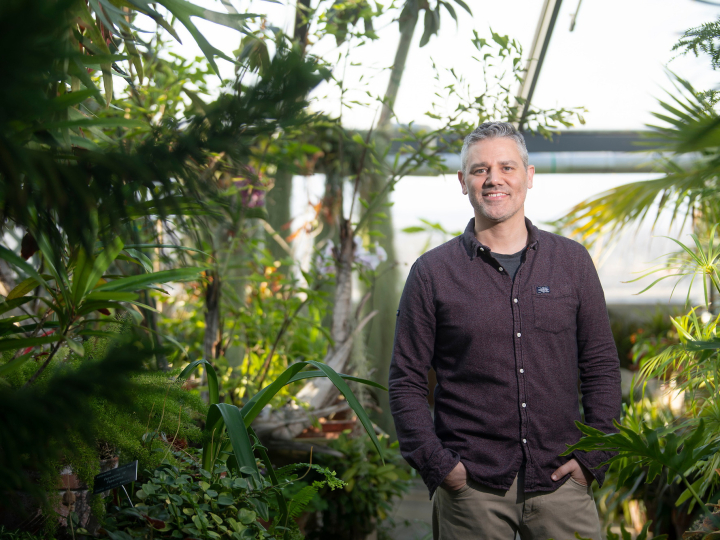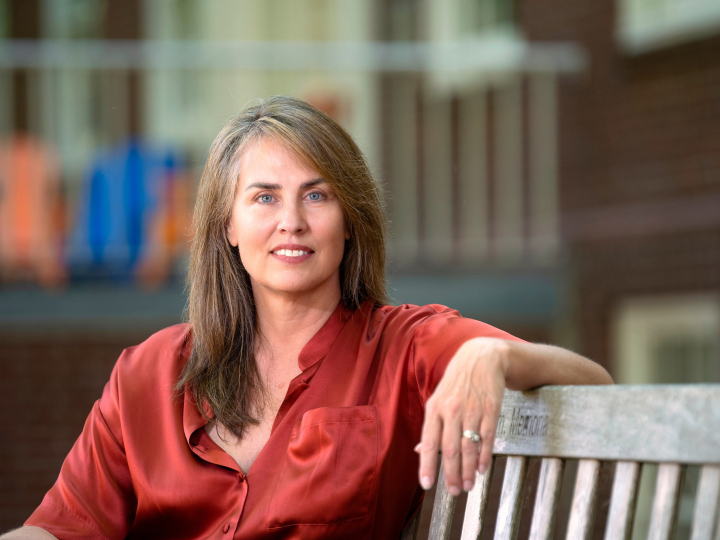In Search of Total Eclipse, Bucknell Astronomers Hit the Road
August 25, 2017
Bucknell University physics major Payton Johnson '19 and her faculty research adviser, Ned Ladd, spent an entire summer preparing to collect astronomical data during the two-and-a-half minutes of total solar eclipse on Aug. 21. Still, as they watched the moon pass completely in front of the sun, the sky go dark and a few bright stars appear in the early afternoon sky, the two stood in wonder for just a moment.
"We were watching the moon cover up the sun until it became just a little sliver," recalled Ladd, a professor of physics & astronomy. "I think all of us assumed that the sliver would go away and that it would be only marginally different than having that little sliver of the sun. But that's not what happens. It's immersive. it's not just like you're viewing something; something is happening around you. There was a collective awe for about five seconds, until we remembered, 'oh yeah, we've got to check our equipment, we've got to collect our data.' "
"All of a sudden it was 'go, go, go,' " added Johnson. "My hands were shaking, I was really excited and I kind of freaked out for a minute. But then I calmed down and did what I needed to."
Ladd, Johnson and six other students travelled to Cumberland Mountain State Park in eastern Tennessee for a chance to see and collect data about the eclipse from within the path of totality. The team had also booked a second location in South Carolina to improve their chances of a view unobstructed by clouds.
"We were checking the weather the entire drive down, and we made the decision at the first rest stop in Tennessee," Johnson said. "The weather forecast was marginally better for Tennessee, and it worked out — it was sunny exactly when we needed it to be."
After camping at the state park for two days, which they spent unpacking and calibrating their equipment, the team awoke to clear skies on the morning of the eclipse. But around 9:30 a few clouds began to gather, threatening to scuttle their months of preparations. The sky had begun to clear again by noon, setting off a race to make their final preparations in time for the moment of totality, around 1:30 p.m. Central Standard Time.
"From the point of first contact — where it starts to look like the moon is taking a little bite out of the sun — until totality was about an hour and a half," Ladd said. "That was an important time for us — we only had two-and-a-half minutes to collect our data, so everything had to be set up, calibrated and aligned before that. It was a stressful time made a little more stressful because we still had clouds around. We were getting worried that even if it did clear up in time for the totality, we wouldn't be ready."
A Peek at the Corona
But the researchers were prepared by the time the sky did finally clear, allowing them to collect information about the corona, the region of roiling plasma that surrounds the sun. For reasons that scientists don't fully understand, the corona is actually much hotter than the surface of the sun, reaching temperatures in the millions of degrees versus thousands at the surface. Since this super-hot halo becomes much easier to see during an eclipse, when it isn't obscured by the blinding light of the sun, Ladd and Johnson were able to record high-resolution video of the corona at four frames per second, providing data that may offer significant evidence for why this difference in temperature exists.
"We're a long way from claiming we have a clear result, but we've got some promising preliminary data," Ladd said. "We're pumped that the experiment appears to have gone off the way we intended it to."
The researchers noted that the trip provided an equally important opportunity for their own education — and for sharing what they're learning with others. They set up their research station at an eclipse-viewing festival hosted by the park and attended by several thousand people, most of whom had to walk by the station on their way in from the main parking area. Many noticed the team's telescopes and camera equipment and stopped by to learn about their research.
"After college I want to be involved in science education, especially for those who aren't as scientifically literate as my peers and I are," Johnson said. "Having the opportunity to explain what I'm doing and tracing it back to what that means has really refined my skills in communicating science."
"I was surprised at what I learned, considering that I have known about eclipses for a while," added Joshua Hellerick '18, a physics major who came along on the trip. "I learned how one experiment was measuring the deposition of energy into the corona via magnetic waves, and that strangely enough, you can look at the extremely hot corona during the eclipse and it won't damage your vision, yet the much cooler surface of the sun will."
The team has now returned to campus and has just begun to analyze their data. They expect the project to continue for several months.

